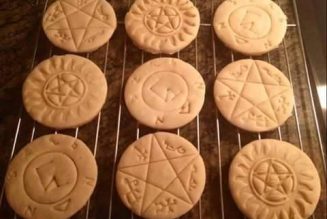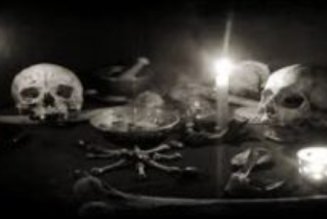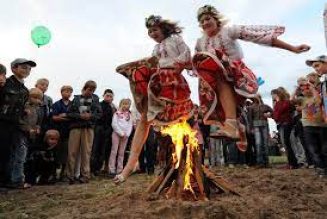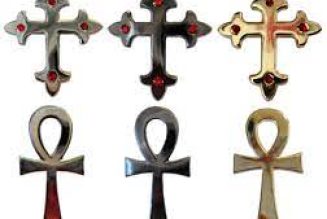A 15th-century English witch and seer who supposedly prophesied scientific inventions, new technology, wars and politics through several centuries, all written in crude rhymes. The books of her “prophecies” are likely the invention of later writers, among them Richard Head, who published a book of her predictions in 1667; an anonymous writer who published the Strange and Wonderful History of Mother Shipton in 1668; and a man named Hindley, who apparently authored Shipton predictions in 1871. More myth and fabulous tales surround Mother Shipton than fact. Reputedly, she was born Ursula Southeil near Dropping Well in Knaresborough, Yorkshire, in 1488, though the dates 1448 and 1486 also are given in various texts. Her mother, who possessed the powers of healing, clairvoyance, storm raising and hexing , died in childbirth with “strange and terrible noises.” Ursula, who inherited her mother’s powers, was raised by a local townswoman. Mysterious things happened around Ursula: furniture moved about on its own, and food disappeared from dinner plates. Once, the townswoman left Ursula alone in her cottage. When she returned with several neighbors, they were attacked by strange forces. A woman was hung by her toes from a staff floating in the air, and men were yoked to the same staff. Other women found themselves dancing in circles; if they tried to stop, Mother Shipton with a familiar, 19th century Mother Shipton an imp in the shape of a monkey pinched them to keep them going. Ursula fit the classic stereotype of hag. Head described her as follows: . . . with very great goggling, but sharp and fiery eyes; her nose of incredible and unproportionable length, having in it many crooks and turnings, adorned with many strange pimples of divers colours, as red and blue mixed, which, like vapours of brimstone, gave such a lustre to the affrighted spectators in the dead time of the night, that one of them confessed that her nurse needed no other light to assist her in the performance of her duty. In art, she is depicted as wearing a tall, conical, brimmed black hat. Despite this incredibly ugly appearance, Ursula married Tobias Shipton at age 24. Her husband then disappeared from all records, and Ursula became known as Mother Shipton. She did not like prying neighbours and once took revenge on a group of them by bewitching them at a breakfast party (see spells). The guests suddenly broke into hysterical laughter and ran out of the house, pursued by goblins. For this mischief, Mother Shipton was summoned to court, but she threatened to do worse if she were prosecuted. She then said, “Updraxi, call Stygician Helleuei,” and soared off on a winged drago The verses attributed to her vary. One of the best known is: Carriages without horses shall go Around the world thoughts shall fly In the twinkling of an eye Iron in the water shall float As easy as a wooden boat Gold shall be found, and found In a land that’s not now known A house of glass shall come to pass In England, but alas! Her predictions included automobiles, telephone and telegraph, iron-clad boats, the California gold rush and the Crystal Palace in London. Mother Shipton also is credited with predicting the Civil War in England, the Great Fire of London (1666), the discovery of tobacco and potatoes in the New World, World War II and the women’s liberation movement. Her memorial, Mother Shipton’s Cave, is in Knaresborough.
Mother Shipton
654 views





















